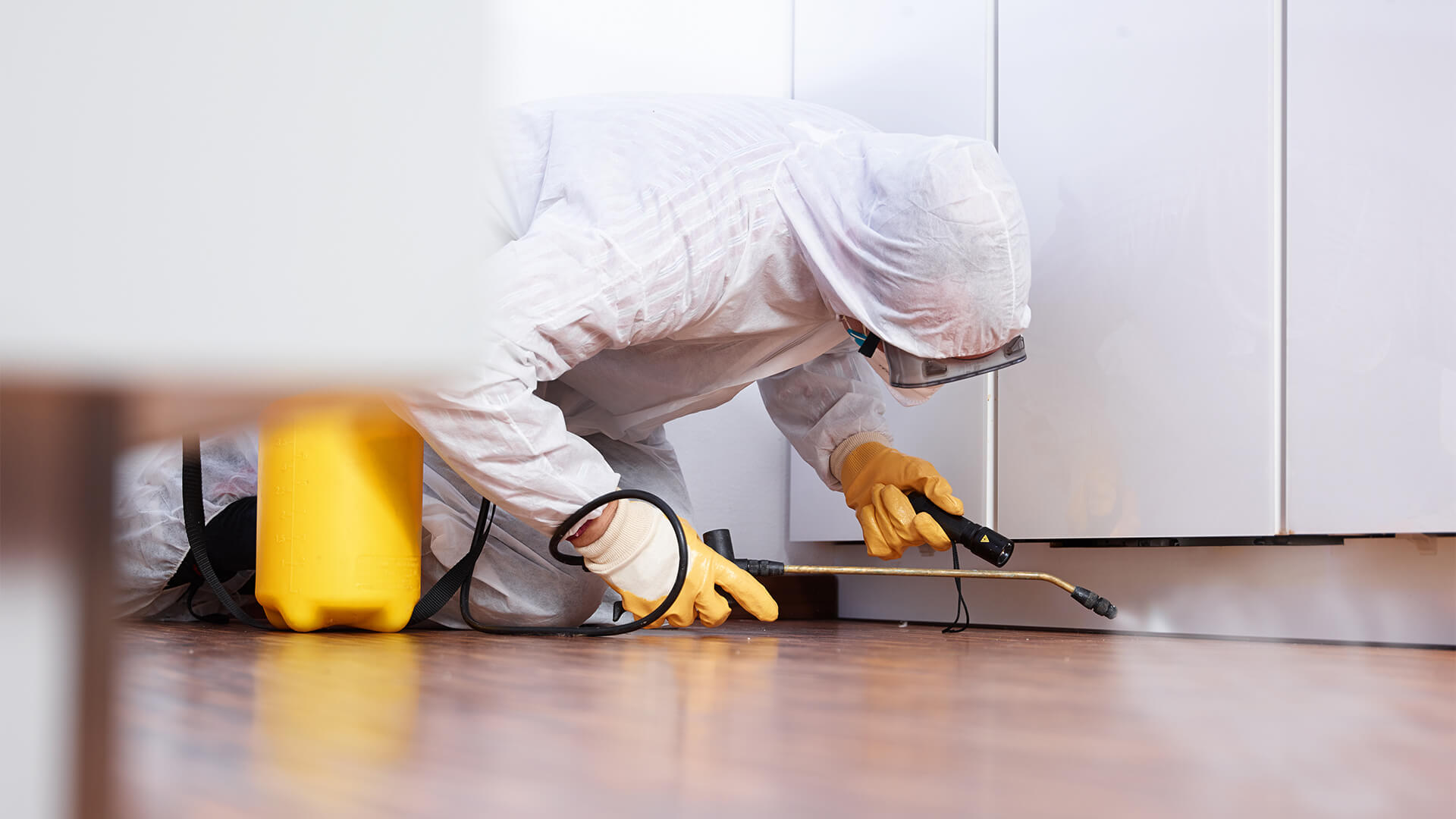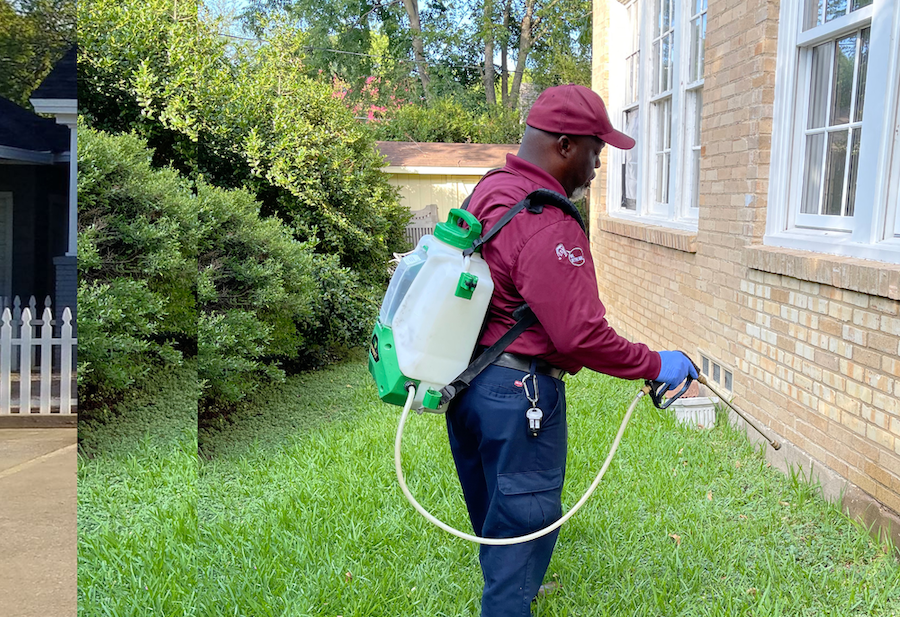A1 Bed Bug Exterminator Charlotte - Specialized Bed Bug Elimination
A1 Bed Bug Exterminator Charlotte - Specialized Bed Bug Elimination
Blog Article
Bed Pest Therapy Breakdown: Contrasting Chemical Vs. Non-Chemical Solutions
In the realm of pest control, especially when taking care of the consistent issue of bed insects, the option between chemical and non-chemical treatment options can be an essential one. Both methods use distinct benefits and downsides, affecting variables such as efficiency, security factors to consider, and overall cost. By checking out the nuanced information of each technique, a clearer understanding of which path to pursue in resolving a bed bug invasion can be attained.
Performance of Chemical Treatments
Chemical treatments for bed bug problems have actually been extensively recognized for their rapid and powerful effectiveness in eradicating these pests. When thinking about the effectiveness of chemical therapies, it is essential to comprehend that they can offer a quick and detailed remedy to a bed pest trouble. Professional exterminators typically depend on insecticides to target bed pests at different phases of their life cycle, including eggs, grownups, and fairies. These chemicals generally work by interrupting the bed insects' nerve system, leading to paralysis and ultimate fatality.
Moreover, chemical therapies have the advantage of using recurring impacts, meaning that they can remain to remove bed insects even after the first application. This residual action is especially helpful in combating any kind of prospective re-infestations. Additionally, the fast activity of chemical therapies can bring relief to people encountering extreme bed insect invasions, permitting them to regain control of their living areas rapidly.
Safety Worry About Chemical Solutions
When using chemical remedies for bed insect therapy is making certain the safety and security of owners and the setting,One crucial aspect that calls for cautious consideration. While chemical therapies can be effective in getting rid of bed bugs, they might posture threats otherwise managed appropriately. One of the main security interest in chemical options is the prospective harm they can trigger to human health and wellness. Exposure to certain chemicals made use of in bed pest treatments can result in respiratory problems, skin inflammation, or other adverse responses, especially in individuals with pre-existing conditions or level of sensitivities. Additionally, incorrect application or dose of chemical pesticides can cause harmful deposits remaining in the cured area, presenting long-lasting wellness risks to owners.
Furthermore, the ecological effect of chemical solutions is one more substantial consideration. Some chemicals used in bed pest treatments may be hazardous to advantageous insects, wild animals, and communities if they seep into the soil or water systems. It is necessary to use chemical therapies sensibly, following safety and security standards, and thinking about much less harmful options to minimize these risks and guarantee the secure and effective monitoring of bed insect invasions.
Benefits of Non-Chemical Techniques
Taking into consideration the possible safety concerns and environmental impact linked with chemical remedies for bed insect treatment, checking out non-chemical methods provides a promising YOURURL.com alternative with several distinct advantages. Non-chemical treatments are eco friendly, as they do not add to air or water pollution, making them a sustainable choice for bug control.
In addition, non-chemical remedies can be effective in targeting bed pests, consisting of hard-to-reach locations where chemical treatments might not permeate. Techniques such as warmth treatment, vacuuming, steam cleaning, and mattress encasements offer extensive elimination without using hazardous chemicals. Moreover, non-chemical methods can be much less turbulent, requiring marginal prep work and permitting quicker reentry right into treated locations. Generally, deciding for non-chemical bed pest treatment methods not just focuses on safety and ecological security however likewise makes certain extensive and effective bug control.
Limitations of Non-Chemical Treatments

In addition, non-chemical treatments commonly require numerous applications to attain successful elimination. This can be taxing and may not constantly guarantee full removal of all bed pests and their eggs, particularly in hard-to-reach or concealed areas.
Furthermore, the success of non-chemical therapies greatly depends on appropriate implementation and thoroughness, which can be challenging for individuals without expert proficiency. Inadequate application of non-chemical methods may cause incomplete removal, bring about relentless problems and the need for extra treatments.
As a result, while non-chemical treatments have their benefits, it is vital to recognize these limitations and consider them when determining the most effective technique for taking care of bed bug problems.
Cost Comparison: Chemical Vs. Non-Chemical Options
Given the limitations connected with non-chemical therapies, an essential element to assess in the context of bed bug management is the expense contrast between chemical and non-chemical choices. In contrast, non-chemical therapies like heat treatment or heavy steam can be a lot more costly, with expenses varying from $1,000 to $6,000 for an entire home. While the initial cost of chemical treatments might seem lower, several treatments may be called for to totally remove the infestation, possibly raising the general cost.
Verdict

Thinking about the prospective security concerns and ecological effect connected with chemical options for bed bug therapy, discovering non-chemical strategies presents an appealing option with several distinctive benefits.Given the constraints linked with non-chemical therapies, a necessary element to evaluate in the context of bed bug administration is the expense comparison in between chemical and non-chemical choices. In comparison, non-chemical treatments like heat treatment or heavy steam can be a lot more expensive, with costs ranging from $1,000 to $6,000 for an entire home. While the first price of chemical treatments might appear lower, multiple treatments may be called for to fully remove the problem, potentially increasing the total cost.In conclusion, when contrasting chemical and non-chemical bed bug therapy choices, it is vital to consider effectiveness, safety and security, benefits, limitations, and price.
Report this page